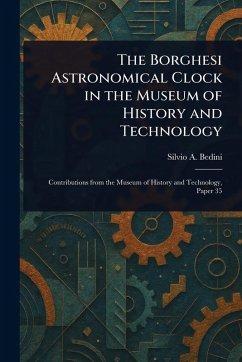Explore the intricate world of early timekeeping with "The Borghesi Astronomical Clock in the Museum of History and Technology," a detailed examination by Silvio A. Bedini of a remarkable mechanical marvel. Originally published as part of the Smithsonian Institution's United States National Museum Bulletin, this work delves into the complexities of the Borghesi astronomical clock, offering insights into its design, function, and historical significance. This volume, meticulously prepared for print republication, offers a fascinating look at the history of astronomical clocks and horology. Discover the ingenuity behind these complex timekeeping devices as Bedini explores the clock's mechanisms and its place in the broader context of technological history. A must-read for anyone interested in mechanical clocks, astronomy, or the history of technology, this book sheds light on a captivating artifact from the collections of the Smithsonian Institution. This work has been selected by scholars as being culturally important, and is part of the knowledge base of civilization as we know it. This work is in the public domain in the United States of America, and possibly other nations. Within the United States, you may freely copy and distribute this work, as no entity (individual or corporate) has a copyright on the body of the work. Scholars believe, and we concur, that this work is important enough to be preserved, reproduced, and made generally available to the public. We appreciate your support of the preservation process, and thank you for being an important part of keeping this knowledge alive and relevant.
Bitte wählen Sie Ihr Anliegen aus.
Rechnungen
Retourenschein anfordern
Bestellstatus
Storno









